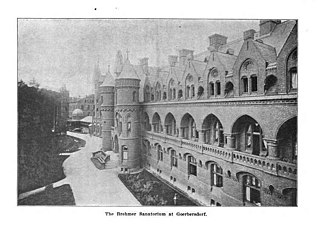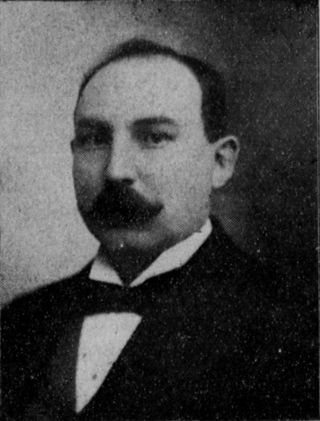
Louisville is the most populous city in the Commonwealth of Kentucky, sixth-most populous city in the Southeast, and the 27th-most-populous city in the United States. By land area, it is the country's 24th-largest city, although by population density, it is the 265th most dense city. Louisville is the historical county seat and, since 2003, the nominal seat of Jefferson County, on the Indiana border.

duPont Manual High School is a public magnet high school located in the Old Louisville neighborhood of Louisville, Kentucky, United States. It serves students in grades 9–12. It is a part of the Jefferson County Public School District. DuPont Manual is recognized by the United States Department of Education as a Blue Ribbon School.

Legend tripping is a name bestowed by folklorists and anthropologists on an adolescent practice in which a usually furtive nocturnal pilgrimage is made to a site which is alleged to have been the scene of some tragic, horrific, and possibly supernatural event or haunting. The practice mostly involves the visiting of sites endemic to locations identified in local urban legends. Legend tripping has been documented most thoroughly to date in the United States.

A sanatorium, also sanitarium or sanitorium, is a historic name for a specialised hospital for the treatment of specific diseases, related ailments and convalescence. Sanatoriums are often in a healthy climate, usually in the countryside. The idea of healing was an important reason for the historical wave of establishments of sanatoriums, especially at the end of the 19th- and early 20th centuries. One sought, for instance, the healing of consumptives especially tuberculosis or alcoholism, but also of more obscure addictions and longings of hysteria, masturbation, fatigue and emotional exhaustion. Facility operators were often charitable associations such as the Order of St. John and the newly founded social welfare insurance companies.

The Waverley Novels are a long series of novels by Sir Walter Scott (1771–1832). For nearly a century, they were among the most popular and widely read novels in Europe.
Waverly Hills is a neighborhood in Southwestern Louisville, Kentucky which is centered at Dixie Highway and Pages Lane. It is located in a hilly section of the city, which is part of the larger Knobs Region which extends into southeastern Kentucky. Its boundaries are roughly Stonestreet Road and 3rd Street Road to the south, Dixie Highway to the west, St Andrews Church Road to the north, and Auburndale to the east.

University Hospital Hairmyres is a district general hospital in the Hairmyres neighbourhood of East Kilbride, South Lanarkshire, Scotland. The hospital serves one of the largest elderly populations in Scotland. It is managed by NHS Lanarkshire.

The United States Marine Hospital in Louisville, Kentucky, in the Portland neighborhood was part of the U.S. Marine Hospital system, which was run by the Marine Hospital Service and its successor the Public Health Service, primarily for the benefit of the civilian merchant marine.

Paul C. Barth was mayor of Louisville, Kentucky, from 1905 to 1907.

Ghost Hunters Academy is a paranormal reality television series that premiered on November 11, 2009, on the Syfy channel. The program was the third spin-off series based on Ghost Hunters. The show featured TAPS members Steve Gonsalves and Dave Tango as they led a group of prospective investigators on various ghost hunting cases at locations that are allegedly haunted, and which had been previously investigated by TAPS.

The Danger Run is a Halloween driving game played in a car. Since its founding in 1994 in Louisville, Kentucky, it is an "interactive Halloween attraction where drivers are given a list of clues to get them from one haunted spot to another." The scavenger hunt provides access to commercial haunted houses. The game is marketed as "The Most Fun You've EVER Had In Your Car!".

Ashmore Estates is a historic building outside Ashmore, Illinois, United States. It was built in 1916 as the second almshouse on the property, part of the Coles County Poor Farm. This complex operated until 1959.

Kingseat Hospital was a psychiatric hospital that is considered to be one of New Zealand's notorious haunted locations with over one hundred claims of apparitions being reported, as of 2011. It is located in Karaka, New Zealand, south of Auckland. Since 2005 has been used as a site for Spookers. Spookers is believed to be Australasia's only haunted attraction scream park as of 2011, and "the number 1 Haunted Attraction in the Southern Hemisphere". According to stuff.co.nz, Kingseat Hospital is considered one of the most haunted locations in New Zealand.

Ethan Allen School for Boys was a reform school in Delafield Town, Wisconsin which operated in a former tuberculosis sanitorium from April 1959 until June 2011, when it was abolished and the inmates moved to Lincoln Hills School in Irma. It was operated by the Wisconsin Department of Corrections.

The Firland Sanatorium was Seattle's municipal tuberculosis treatment center. It opened on May 2, 1911, and closed on October 30, 1973.

St. Ignatius Hospital is a former manor hospital located in Colfax, Washington, United States, established in 1892 by the Sisters of Providence.
















